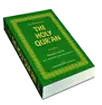-
Home
Assalam-o-Alaikum!
Welcome to my website, Islamicblog.co.in.
I am happy to tell you that you can find in this website Islamic articles, Islamic wallpapers, Latest Islamic News & updates. I have tried my best to make this website informational. But your comments and suggestions are always welcome.
I want to make this website complete Islamic informational website, but for that I need the fund to run this website. If you like my website and want me to make this better, please consider to donate.
Thank You!
-
Sisters Area
Modern Muslim Women & Challenges
-
5 Pillars of Islam
The Five Pillars of Islam
Shahada
- Meaning of Shahada
- The Islamic Creed
- Shahada Is More
- Shahada Covers
- Part of Shahada
Salat
- Salat & the Muslim
- Salat, certain rituals
- Intentions with Salat
- Makes a Salat valid
- Types of Salat
- Salat For Anyone
Zakat
- Alms-giving Or Zadat
- Deserve Zakat
- Zadat, & the People
- Value Of Zakat
- Do With Zakat
- About Zakat
Fasting
- Ramadan Meanings
- Some Lessons
- During Ramadan
- Ramadan Dates
- Ramadan Foods
- Ramadan Advantages
Hajj
- Hajj Once in life
- Price for Hajj
- Hajj Pilgrims
- Get to Hajj
- Tawaf of Hajj
- Hajj Is Completed
-
Stories of Sahabah
Stories of Sahabah, Advantages of Sahabah's life history And many more Articles on these topics.
- Hazrat Abu Musa Ashaari (RA)
- Hazrat Suhayb Ar-Rumi (RA)
- Hazrat Abu Hurairah (RA)
- Hadrat Bilal R.A
- Hadrat Ammar R.A.
- Sa`D Ibn Abi Waqas (RA)
- Hazrat Salman Al-Farsi (RA)
- Health and Beauty

















Earliest Evidences of Sa’d ibn abi Waqqas in China
A.M.A. Shushteby noted:“According to Chinese tradition, a certain S’ad, son of Vaqqas, or Wahab, the son of Abu-Kabshah, was the first Muslim who reached Canton by sea, as early as 629 AD.†In one instance, Umar addressed Sa’d ibn abi Waqqas as Sa’d ibn Waheeb. So, here Wahab is Sa’d and Abu Kabsha is his (Sad’s) father Abi Waqqas. (See: A. M. A. Shushteby, 1938, Outlines of Islamic Culture, volume 1: Historical and Cultural Aspects, The Bangalore Press: Bangalore, P. 25.)
Before we try to reach any conclusion on how early and who reached China as a Muslim first, we need to peruse the following classical accounts including Chinese and of the western historians.
Classical/Original Original Source
Source 1:
Based on Minshu (1620 CE) by Ho Ch’iao-Yuan:
“Activities of Persians and Arabs in these cities (Yang-chou and Canton) were confined to maritime trade because the majority of them were merchants. There were also Islamic disciples who came to China with the intention to preach. In the reign of Wu-te (AD 618-626), four Islamic disciples were dispatched to China to spread the Muhammadan faith. Of these four, one was posted in Canton, one in Yang-chou and the other two were stationed in Ch’uan-chouâ€.
(Source: Chiu Ling-Yeong, Persian, Arabs and other Nationals in Tang China, in the Journal of the Royal Asiatic Society of Hong Kong, vol. 13 (1973): [ISSN: 1991- 7295] page 62, quoting Ho Chiao-Yuan (He Qiaoyuan) , c. 1620 AD, Manshu, Chapter 7}.
Source 2:
Original Chinese Account of the 651 Embassy based on Old & New Tang Dynasty Records:
According to Tang histories, an Arab embassy from Caliph Usman (described as the fourth king/Caliph) arrived at Tang court in 651 CE which was in the second year of Emperor Yung-hui.
(Sources: Liu Shu (ed.), 945, The Old Tang History (Chiu T’ang Shu)Bold text, SSu Pu Pei Yao edition: Wu Tai Publication (Catalogue: 198.28b) and Ou-Yang Hsiu & Sung Ch’i (eds.), 1061,The New Tang History (Hsin T’ang HsuBold text), Kai Ming Erh Shih Wu Shih Edition: Sung Publication (Catalogue: 221.19a). Ou-yung Hsien (1007-72 CE) wrote the New History of the Tang Dynasty (Hsin Tang Shu/ Xi’n Tang Shu> source: Wm. Theodore deBarry, (ed.), 1960, Sources of Chinese Tradition, New York: Columbia University Press; Raphael Israeli, 1994, Muslims in China, New Delhi: Ambika Publications, p.80). The Old Tang History mentions Yung-hui erh-nien (meaning: the second year of Yung-Hui, i.e. in 651 CE about the Arab embassy. )
Source: 3
E.J. Brill’s ‘First Encycloprdia of Islam 1913-1936, by M. Th. Houtsma, 1993, page 841 wrote:
As to Chinese Muslims legend on Sad ibn abi Waqqas, the maternal uncle of the Prophet, after research, “Thiersant mentions the name Wahb Abu Kabsha in addition to Sa’d ibn Abu Wakkas. The legends have been collected by Thiersant and more critically by Deveria, Origineâ€. Traddition also says that Islam was brought to China after a dream by Chinese Emperor Tai-Tsung (627-650AD) by land route via Hami (Kumul) by Arab envoys in the Emperor’s time.
Source 4:
C.L. Pickens , China and Arabia prior to the T’ang Dynasty (618 AD) in The Muslim World, vols. 32-33, Hartford Seminary Foundation, 1942, p. 200 noted:
“Sahib Sa’d Wakkas came to China in the years of K’ai Huang of the Sui Dynasty†(ie., between AD 581- 600) ; says the “Great Ming Geography†which was commenced in AD 1370 and published in AD 1461.
Source 5:
Franz Xaver Biallas, Heinrich Busch, Rudolph Rahmann, in Monumenta Serica: Journal of Oriental Studies, vol. 36, 1984, Tokyo: Monumenta Serica Institute, page 556-7: wrote.
{G. Deveria, he continues, has “traced it back to the ‘Great Ming Geography,’ which was commenced in 1370 AD,…. In this geography a chapter devoted to Medina states that Sahib Saad Wakkas came to China in the years of Kai Hwang of the Sui Dynaty. Page 557 noted: †…therefore in Mason’s work, p. 268, no.2, it should be read as Wa Ko-shih and in Ma Yi-Yu’s work, p. 104, it should read as Wa-ko-ssu which would make it ‘Wakkas’. Only Vankhas, as I will continue to call him in the Soviet Dungan version of the legend, survives the trip and reach China. There is no doubt that Vankhas is Wakkas, about whom a great deal of contradictory, legendary and confusing information is writtenâ€, as Waqqas was noted to have arrived in China in 628 and 651 also.}
(also by Franz Xaver Biallas, Fujên ta hsüeh, Monumenta serica: journal of oriental studies, Volume 36, 1984, Peking, Tokyo (Japan) SVD Research Institute, Monumenta Serica Institute, Nanzan Daigaku, p. 268)
Shiraz Khan Says:
December 30, 2010 at 10:51 am | Reply
A.M.A. Shushteby noted:“According to Chinese tradition, a certain S’ad, son of Vaqqas, or Wahab, the son of Abu-Kabshah, was the first Muslim who reached Canton by sea, as early as 629 AD.†In one instance, Umar addressed Sa’d ibn abi Waqqas as Sa’d ibn Waheeb. So, here Wahab is Abi Waqqas (father of Sa’d) and Abu Kabsha is his Uhaib (Abi Waqqas’ father). [See: A. M. A. Shushteby, 1938, Outlines of Islamic Culture, volume 1: Historical and Cultural Aspects, The Bangalore Press: Bangalore, P. 25.]
Before we try to reach any conclusion on how early and who reached China as a Muslim first, we need to peruse the following classical accounts including Chinese and of the western historians.
Classical/Original Original Source
Source 1:
Based on Minshu (1620 CE) by Ho Ch’iao-Yuan:
“Activities of Persians and Arabs in these cities (Yang-chou and Canton) were confined to maritime trade because the majority of them were merchants. There were also Islamic disciples who came to China with the intention to preach. In the reign of Wu-te (AD 618-626), four Islamic disciples were dispatched to China to spread the Muhammadan faith. Of these four, one was posted in Canton, one in Yang-chou and the other two were stationed in Ch’uan-chouâ€.
(Source: Chiu Ling-Yeong, Persian, Arabs and other Nationals in Tang China, in the Journal of the Royal Asiatic Society of Hong Kong, vol. 13 (1973): [ISSN: 1991- 7295] page 62, quoting Ho Chiao-Yuan (He Qiaoyuan) , c. 1620 AD, Manshu, Chapter 7}.
Source 2:
Original Chinese Account of the 651 Embassy based on Old & New Tang Dynasty Records:
According to Tang histories, an Arab embassy from Caliph Usman (described as the fourth king/Caliph) arrived at Tang court in 651 CE which was in the second year of Emperor Yung-hui.
(Sources: Liu Shu (ed.), 945, The Old Tang History (Chiu T’ang Shu)Bold text, SSu Pu Pei Yao edition: Wu Tai Publication (Catalogue: 198.28b) and Ou-Yang Hsiu & Sung Ch’i (eds.), 1061,The New Tang History (Hsin T’ang HsuBold text), Kai Ming Erh Shih Wu Shih Edition: Sung Publication (Catalogue: 221.19a). Ou-yung Hsien (1007-72 CE) wrote the New History of the Tang Dynasty (Hsin Tang Shu/ Xi’n Tang Shu> source: Wm. Theodore deBarry, (ed.), 1960, Sources of Chinese Tradition, New York: Columbia University Press; Raphael Israeli, 1994, Muslims in China, New Delhi: Ambika Publications, p.80). The Old Tang History mentions Yung-hui erh-nien (meaning: the second year of Yung-Hui, i.e. in 651 CE about the Arab embassy. )
Source: 3
E.J. Brill’s ‘First Encycloprdia of Islam 1913-1936, by M. Th. Houtsma, 1993, page 841 wrote:
As to Chinese Muslims legend on Sad ibn abi Waqqas, the maternal uncle of the Prophet, after research, “Thiersant mentions the name Wahb Abu Kabsha in addition to Sa’d ibn Abu Wakkas. The legends have been collected by Thiersant and more critically by Deveria, Origineâ€. Traddition also says that Islam was brought to China after a dream by Chinese Emperor Tai-Tsung (627-650AD) by land route via Hami (Kumul) by Arab envoys in the Emperor’s time.
Source 4:
C.L. Pickens , China and Arabia prior to the T’ang Dynasty (618 AD) in The Muslim World, vols. 32-33, Hartford Seminary Foundation, 1942, p. 200 noted:
“Sahib Sa’d Wakkas came to China in the years of K’ai Huang of the Sui Dynasty†(ie., between AD 581- 600) ; says the “Great Ming Geography†which was commenced in AD 1370 and published in AD 1461.
Source 5:
Franz Xaver Biallas, Heinrich Busch, Rudolph Rahmann, in Monumenta Serica: Journal of Oriental Studies, vol. 36, 1984, Tokyo: Monumenta Serica Institute, page 556-7: wrote.
{G. Deveria, he continues, has “traced it back to the ‘Great Ming Geography,’ which was commenced in 1370 AD,…. In this geography a chapter devoted to Medina states that Sahib Saad Wakkas came to China in the years of Kai Hwang of the Sui Dynaty. Page 557 noted: †…therefore in Mason’s work, p. 268, no.2, it should be read as Wa Ko-shih and in Ma Yi-Yu’s work, p. 104, it should read as Wa-ko-ssu which would make it ‘Wakkas’. Only Vankhas, as I will continue to call him in the Soviet Dungan version of the legend, survives the trip and reach China. There is no doubt that Vankhas is Wakkas, about whom a great deal of contradictory, legendary and confusing information is writtenâ€, as Waqqas was noted to have arrived in China in 628 and 651 also.}
(also by Franz Xaver Biallas, Fujên ta hsüeh, Monumenta serica: journal of oriental studies, Volume 36, 1984, Peking, Tokyo (Japan) SVD Research Institute, Monumenta Serica Institute, Nanzan Daigaku, p. 268)
Source 6:
Curiusly also, I find another evidence of Abu Waqqas and other Sahabas in Chittagong (Bangladesh) on way to China, in a book “Challenge of Islamic Da’wah in Bangladesh: The Christian Missions and Their Evangelization, by Dr. Md. Yusuf Ali & Abu Sadat Nurullah, IIUC Studies, vol. 4, Dec 2007, p. 88. The text (extract) is as follows:
*Evidence of Abu Waqqas in Bangladesh*
“The advent of Islam in Bangladesh or Bengal is said to be in around year 620 CE (around 10th year of prophethood). MuÃaddith Imam Abadan Marwazi (R), in his book, wrote that the Companions of the Prophet (pbuh) like Abu Waqqas, Malik ibn Wahaib, Qays bin Huzayfah, ‘Urwa ibn Athathah, Abu Qays ibn al-×Ärith (R) and some other Companions, in the seventh year of prophet hood, went on a voyage from Ethiopia (after the first migration) towards China. During their long journey on the ocean for nine years, they stopped over at the ports of Bangladesh, or Bengal. By their influential characters, many a one accepted Islam there.(Ref: KHAN, MAULANA MOHIUDDIN (1999); “Bangladeshe Islam: Koyekti Tothyosutra.†(Islam in Bangladesh: Sources), The Monthly Madinah. Jan 1992, PP. 41. Cited in A K M Nazir Ahmad. Bangladeshe Islamer agomon (The advent
of Islam in Bangladesh), (Dhaka: Bangladesh Islamic Centre, 1999) P. 20.)
“This event is assumed to be in Chittagong, as the major port prevalent in Bangladesh is the port of Chittagong. In an account, Qureishi mentions about the initiation of Islam during the reign of ‘Umr bin al-Khattab (R) through Chittagong, which was, thus, known as ‘Islamabad’ previously.†(Ref: QUREISHI, UMR B. A. AZIZ (2002); Al-Islam fi Bilad al-Banjal (Islam in the Bengal), (Cairo: Islamiyyah lil-Taba’ah, 2002), P. 79.)
Evidence 7:
Dr. KO Ko Gyi noted:
“Manipuri Muslims are one of the earliest settlers (i.e., from circa 680 AD) outside the Arab Peninsula and the Gulf region vis-a-vis histories of South Asian and S.E. Asian Muslim histories including China where the Prophet Muhammad (570-632 AD) sent two preachers by sea in c. 616 AD.
Teaching of Prophet Muhammad (Sa’d bin Waqqas) and that of Tang period Chinese records reveal that in a return journey to China in reciprocity to the Chinese embassy to Arabia, i.e a Muslim embassy to Chinese capital Chan’gan reached in 651 AD. The Hui of China (Chinese Muslims) trace their origin to the date of 25 August, 651 AD.”
(http://drkokogyi.wordpress.com/2010/10/28/origin-of-some-of-the-muslims-in-manipur-arakan-and-panthay-burmese-chinese-muslims/)
Comment by Farooque Ahmed — January 2, 2011 @ 4:07 pm
Mistake Corrected:
In the first Para, It wrote:
“A.M.A. Shushteby noted: “According to Chinese tradition, a certain S’ad, son of Vaqqas, or Wahab, the son of Abu-Kabshah, was the first Muslim who reached Canton by sea, as early as 629 AD.†Wherein, Sa’d is Sa’d; Sa’d's fathers is Abi Waqqas, and Abi Waqqas’s father is Uhaiyb (here Abi Kabsha), according to some western writers. (The mistake of Sa’d as Wahab is regretted; the was just oversight).
Comment by Farooque Ahmed — January 2, 2011 @ 4:16 pm
… [Trackback]…
[...] Read More here: islamicblog.co.in/2010/12/sad-ibn-abi-waqas-ra-the-father-of-arab-china-political-relations/ [...]…
Trackback by Homepage — August 3, 2012 @ 12:03 am
I just want to mention I am just beginner to blogging and site-building and truly liked you’re web site. Likely I’m want to bookmark your blog post . You really come with good well written articles. Regards for sharing with us your web site.
Comment by Ranee Mccoppin — August 6, 2012 @ 1:23 am